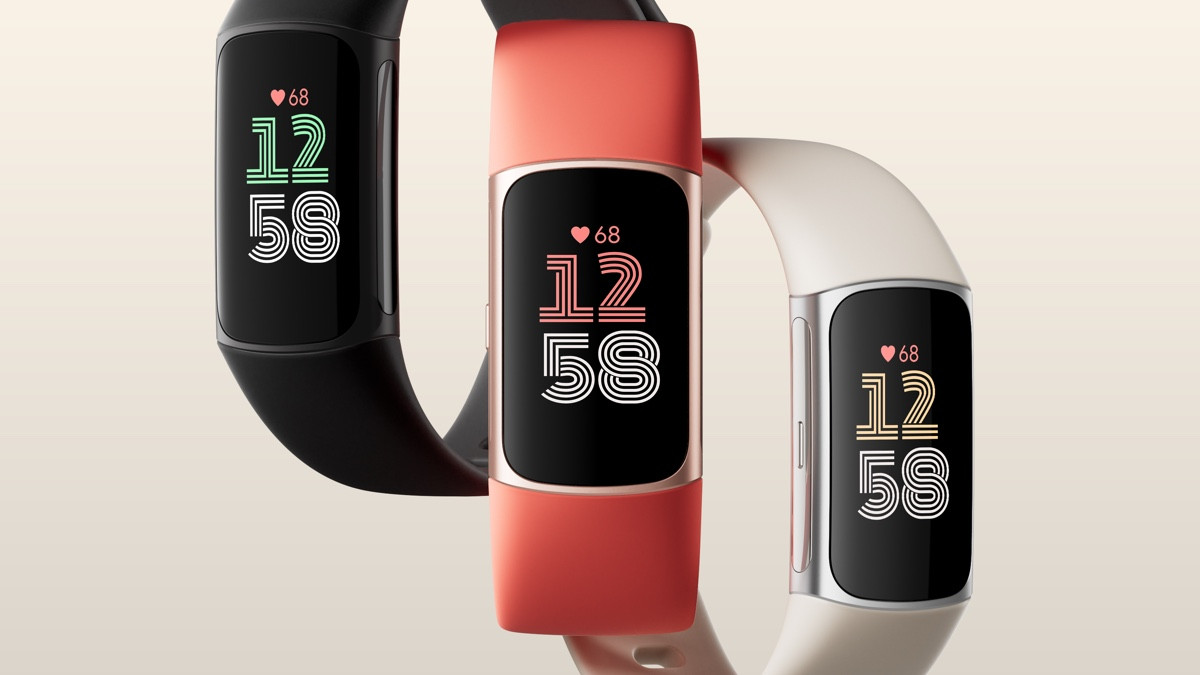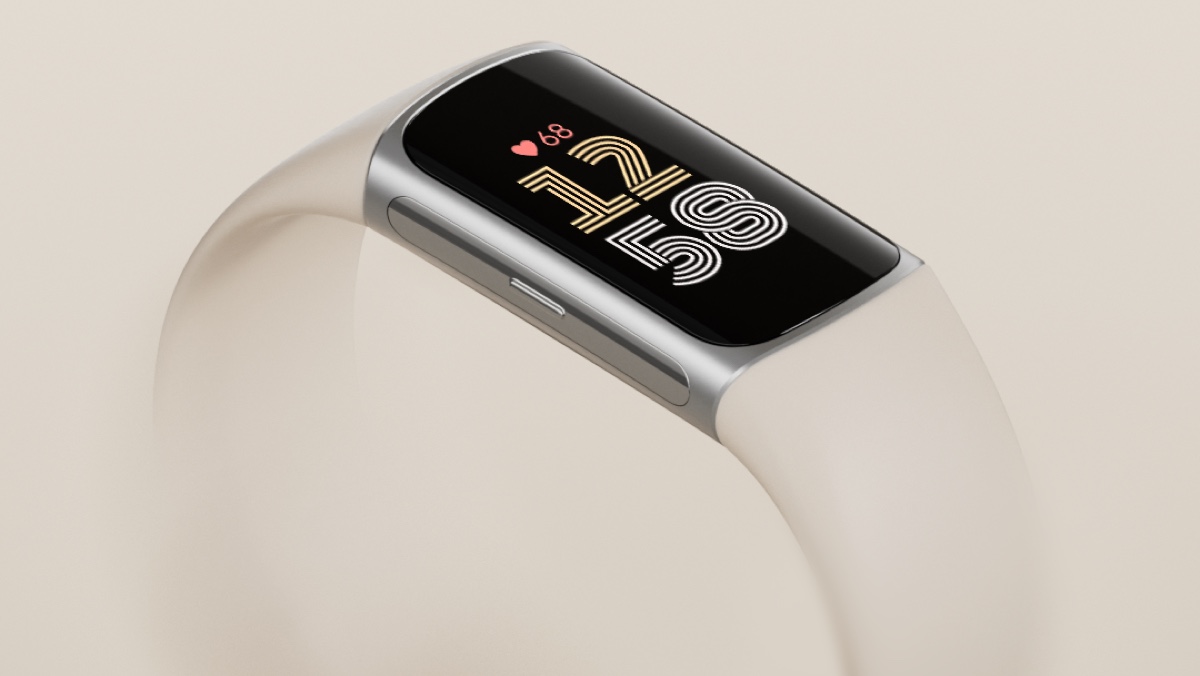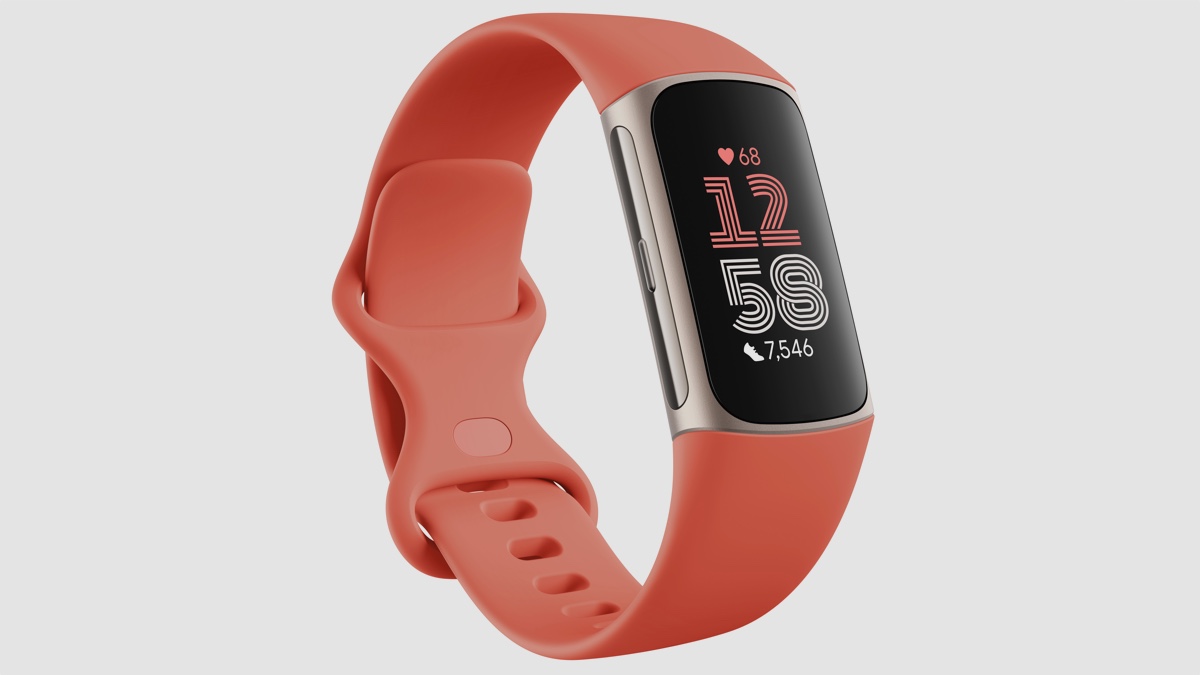
The Fitbit Charge 6 is now live after weeks of speculation and leaks. Despite zero aesthetic changes, the Charge 6 is now treated to heaps of Google services, and new heart rate algorithms brought from the Pixel Watch.
It comes just under a year after the Charge 5, which was a sensor-packed fitness tracker that did miss in some key areas.
So can Google move the fitness tracker forward? Read on to find out.
Design and button
Fitbit
Google’s all about the Pixel Watch and has spent much of the last year stripping Fitbit smartwatches of any feature that could compete with its flagship watch. But the messaging from Google is that fitness trackers are here to stay, and the Charge 6 remains a Fitbit product, rather than a “Made By Google” device with added Fitbit powers.
But for those looking for a huge revolution, you won’t find it here.
The Fitbit Charge 6 embodies the same case and design as the Charge 5 – but this time in 100% recycled aluminum. But with one key addition: the physical button is back.
The Charge 5 was solely a touchscreen device, and this was universally hated. And it seems Fitbit/Google (Foogle?!) got the message loud and clear.
New AI-based HR powers
Fitbit
Under the hood, there are some other changes too. The heart rate tech has been upgraded with Google-powered algorithms, based on its huge machine learning and AI capabilities. This was a pledge when Google bought Fitbit, and it quickly made good on its promise.
Google says the upgraded heart rate algorithms can increase accuracy when tracking strenuous workouts by up to 60% – which is not too shabby. Fitbit has added HIIT, CrossFit, and skiing modes to the Charge 6 tracker – so it’s better suited to workout classes all around.
It still boasts GPS – and we asked Google whether there had been any improvements here after a pretty poor accuracy showing in our Charge 5 review. The answer wasn’t convincing, and a spokesperson said they had seen improvements in the lab. So we’ll be putting this to the test in our forthcoming review.
The sensor array is the same, so you get the ECG and EDA (electrodermal activity) stress sensor, as well as continuous Afib detection and high/low heart rate monitoring.
A year on from the Charge 5, there’s still nothing in the fitness tracker market that can touch the Charge 6 for the breadth of health sensors and capabilities – and it was on this basis that it got a recommendation in our review.
Outside of the new heart rate algorithms, smart services are the biggest addition.
Google smarts
You can now get Google Maps turn-by-turn directions on the Charge 6’s AMOLED display – which is neat.
There’s also Google Wallet and Google Pay, which will act as. Controller for playback on YouTube Music (but not Spotify or other services, which feels a little stingy).
It will also sync via Bluetooth to compatible gym equipment and broadcast heart rate data. And it already supports Peloton and Nordic Track out of the box – and Google says more support is on the way.
Price and battery life
So what about the price? Well, the Charge 6 will cost $159/£159 when it goes on sale. You also get six months of Fitbit Premium and a month of YouTube Music at the price. It launches on 12 October in 30 countries
You can slice this two ways. It’s a very expensive fitness tracker given what you can get from Huawei and Xiaomi at under £50. Or, you can look at features such as ECG, AFib detection, and all of the health smarts, and see it as a big saving over rival devices such as an Apple Watch, Samsung Galaxy Watch, or Huawei Watch GT 4.
Battery life is at 7 days, which remains unchanged with the Fitbit Charge 6.
Wareable says
It’s hard to feel a little underwhelmed when the first Fitbit device for over a year doesn’t even change the case design – and this is just a refresh for the Fitbit Charge 6.
It also offers reassurance that Fitbit as a hardware brand is here to stay – even if Google just keeps it to fitness trackers for now. The brand is pretty synonymous with that form factor and hasn’t broken through with its smartwatches, so this could be a smart choice by Google.
When it comes to the Fitbit Charge 6 – it was already so far ahead of its rivals that it hasn’t had to change. And the addition of Google services such as Maps and Wallet just makes it a more appealing and well-rounded package.
Rivals have given up on fitness trackers and the race with Fitbit, and cheaper alternatives can't come close to Fitbit's AFib detection, ECG, and app platform. So if you want the health features of an Apple Watch Series 9 but in the form of a classic Fitbit band, the Charge 6 is for you.
How we test
